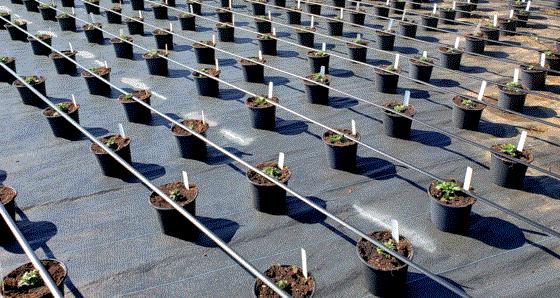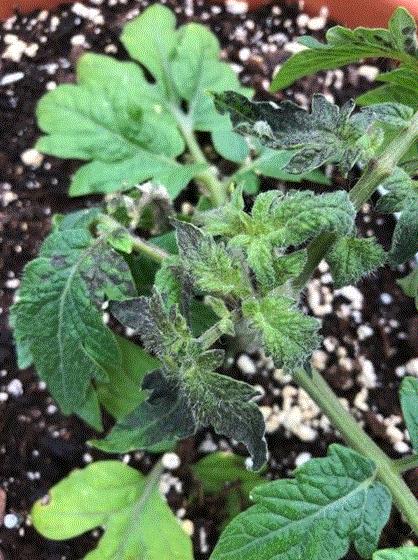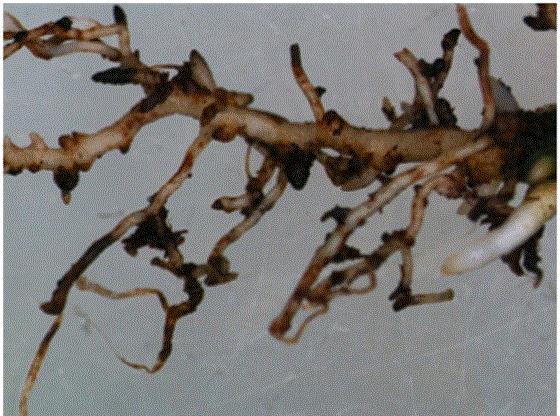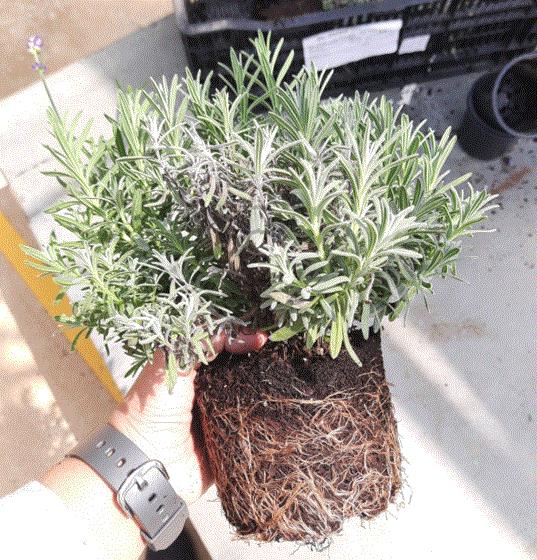It’s Mum Time (Believe it or not …)
For the next few weeks, as you get ready for garden mum season, I’ll be sharing resources to help you and your team nail this year’s crop. We know shoppers will be hungry for Fall plants once again, and you definitely want to maximize the opportunity.

Let’s begin at the beginning: A while back, I caught up with Dr. Will Healy at Ball for a podcast miniseries on garden mums. Here’s YOUR BEST MUM CROP EVER (PART 1). This one is all about starting your crop—getting them vegetative and keeping them vegetative.
Will goes indepth into the two most critical factors at this stage in the game: temperature and feeding. He covers the most effective temperatures (because mums like it hot). After that you’ll learn all about thermophotoperiodicity (say that three times fast!). We also touch on other important pieces of the production puzzle, including insect and disease prevention, PGRs and more, with plenty of tips and tricks peppered throughout.
Nick’s Tip of the Week: Tackling TSWV
Each week, I’ll work with my partner in crime Nick Flax, one of the newest technical services experts at Ball, to share a concern that’s come up during one of his numerous calls with growers across North America. This week he’s got plant diseases on his mind—specifically TSWV.
PROBLEM: Temperatures are rising this time of year, even in the north, and with higher temperatures comes higher levels of pest activity. I’ve gotten quite a few calls this week with requests for pest management suggestions, but one issue that crossed my desk a few days ago highlights the need for growers everywhere to have a solid IPM program. This grower reported dark splotches, mottled chlorosis and distorted growth on several varieties of tomatoes in both small and large containers, to which I responded: “Uh-oh …”

NICK’S TIP: The first thing that comes to mind when I hear a grower describe such symptoms is Tomato Spotted Wilt Virus (TSWV), so the first question I asked the grower was if they currently have thrips pressure. For those of you who are not familiar with this virus, thrips transmit (vector) TSWV by taking it into their gut during feeding in the larval stage and, after an incubation period of several days where the virus multiplies inside the thrips, regurgitating it into the cells of uninfected plants during future feedings. This grower said they weren’t sure if they had thrips but had not really been monitoring for them, so I asked for a few photos and suggested they put some sticky traps out to see what they can catch.
Sure enough, not even a day later they reported finding lots of thrips and the photos clearly looked like TSWV symptoms. I suggested they get plants tested just to be certain, and the results came back positive for TSWV.
For all of you out there who are a bit more relaxed on scouting—I get it. It’s hard to find time to thoroughly scout your crops and record bug counts in spring, but this is one of the most important things you should take the time to do in your operation. Scouting is half of the battle to combat viruses like TSWV, and the other part is building and executing an effective IPM program. Viruses like this don’t just appear out of thin air—they come from somewhere and the source could be a lot closer than you think.
Tospoviruses like TSWV can get into your greenhouse on infected plant material, but often it comes in on plants from outside of your operation, and these plants may not show symptoms until later. That's why you should regularly scout incoming plants and established crops in your greenhouse to identify symptoms early and remove infected plants before it can spread.
Another way TSWV can get into your greenhouse is from local “reservoirs.” Many weeds can serve as hosts for the virus without dying, so managing weeds in and around your greenhouse that thrips might be feeding on is a critical component to keeping the virus out.
Lastly, and most importantly, managing the vector (thrips) is the best way to prevent it from infecting your crops or keep it from spreading if it does get in. Thrips are becoming increasingly difficult to manage with traditional pesticide chemistries, so use of biologicals to keep thrips pressure from getting too high is a strategy that many growers use across North America. Preventative management using traditional pesticide chemistries can also be very effective, but be sure you’re rotating between at least three (ideally more) IRAC groups to ensure local thrips don’t become resistant to the pesticides you’re using.

Black Root Rot
I saw a technical tip in a recent edition of the Greenhouse TPM/IPM Report from University of Maryland Extension that seemed appropriate for this newsletter. The info is courtesy of Karen Rane, a plant pathologist and director of the plant diagnostic clinic at UMD Extension. Here’s what she has to say about Black Root Rot rearing its ugly head again this season.

We’ve had several samples of annual vinca (Catharanthus) suffering from black root rot submitted to the UMD Plant Diagnostic Lab over the past few weeks. Black root rot is caused by the fungus Berkleyomyces basicola (formerly called Thielaviopsis basicola), which infects roots of a number of herbaceous and woody ornamental crops. Annual vinca, pansy, petunia, calibrachoa, poinsettia and holly are common hosts. Infected plants show yellowing foliage and stunted growth. Roots develop dark brown/black lesions and root tips, due to the proliferation of dark, thick-walled spores of the pathogen within root tissue.
Although the foliar symptoms of this disease might resemble a nutritional problem, black root rot usually occurs on random plants within a plug tray, pot or bench, while nutritional disorders occur more uniformly throughout a crop. The fungus survives crop to crop in infected plant debris and contaminated soil or potting mix, and sanitation is critical to disease management. Re-using trays and pots without thorough washing and sanitizing is an all-too-common way that this disease can spread and cause significant losses.
It is best to use only new plug trays and pots for highly susceptible crops like pansy and vinca to avoid the disease. Examine new plants or plugs for tell-tale symptoms of black root rot, and do not plant those with poor root systems or black root lesions. Black root rot is more severe under alkaline conditions, so using acidifying fertilizers and keeping growing medium pH at 5.6 or lower can help reduce disease severity. There are a number of fungicides that can help protect plants from black root rot infection. Thiophanate methyl is very effective, and triflumizole, fludioxonil and polyoxin-D can also provide some control.

Root Rot & Stunted Lavender
Have you seen stunted growth or uneven flowering on your lavender crop? Is the color way too gray for your liking? It could be that your pots are far too wet for proper growth. Here’s what technical expert Diego Poot over in The Netherlands has to say about the problem and what to do to get the crop back on track.

Take a look at the brown roots in the photo. The root quality is extremely poor, which is very likely pythium or another root disease like Fusarium or Phytophthora.
Right away, I would suggest you dry out the soil (the plants should not be wilting) and make a fungicide drench at the next irrigation using Cyazofamid, Etridiazole, Propamocarb or Pyraclostrobin + Boscalid. (The first three are effective against pythium, and the last one works against a broader range of fungal root diseases.)
After that, dry out the potting soil (to a level 2-3) before irrigating again. When irrigating, do not fully saturate the potting soil (maximum moisture level 4). You might need to separate the small and big plants to avoid overwatering the smaller plants. For the next planting try to use media that holds less water and allows for more drainage. Perhaps add 20-30% coarse perlite or use more coarse coco (peat) or middle size bark. And consider a preventative fungicide drench every three to four weeks to prevent root rot diseases.

More on Lavender
Speaking of lavender, there has been a ton of new breeding and improvements on one of the most popular perennials over the past five or so years. It’s got to be tough keeping up with this fast-moving crop. One of the breeding companies leading the lavender charge is Darwin Perennials, and they not only bring new plants to market but also provide the technical expertise to help you succeed and deliver high quality.

Tech On Demand is here to help you step up your lavender game! Over the course of this video titled LEVEL UP YOUR LAVENDER GAME, Chris Fifo from Darwin takes us through the history of lavender and the different types commonly produced, and then drills into how to select the best type for your specific product needs, pot size and market. He spends some quality time on production—all the way from seed and URC stages through to finishing the crop—including ways he’s found to overcome common pitfalls in all stages.
The video closes with some variety-specific info covering some of the new intros mentioned above, as well as how to use a grower-friendly scheduling chart that’s available from Darwin and Kieft.
If you grow lavender, be sure to gather your team and check it out!

Finish Line …
Thank you all for the comments submitted following last week’s newsletter. It seems like we’re hitting the mark pretty well with content and timeliness. For those of you who suggested topics to cover in future editions, I’m on it. It’s a matter of lining up the right experts to tackle the challenges proposed.
I want to reiterate that I’m only an email away (or message me on LinkedIn, Facebook or wherever you want to reach out) and always willing to chat. If you have go-to links for technical information, please pass those along, as well. Our goal here is to be collaborative and we want to do our best to aggregate resources so you don’t have to waste time searching and can get back to busines—the business of growing and selling amazing plants!
As always, my email is bcalkins@ballhort.com if you have any comments, suggestions or challenges we can help solve.

Bill Calkins
Editor - Tech On Demand
This email was received by you and 22,262 other fine subscribers!
If you're interested in advertising in Tech On Demand, contact Kim Brown ASAP and she'll hook you up.